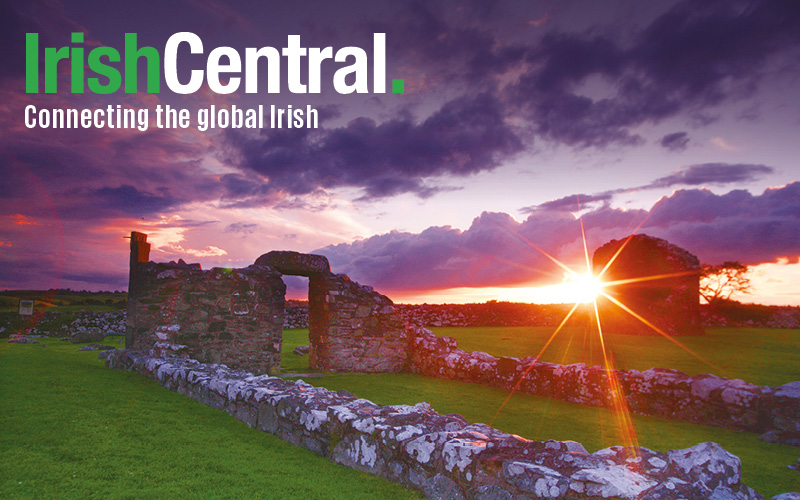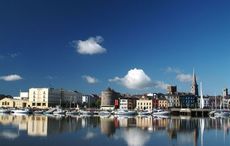Ireland’s Office of Public Works (OPW) the group responsible for the upkeep of historic buildings in Ireland, has recorded a successful year with an increase in visitor numbers at sites such as Kilmainham Gaol, the Rock of Cashel and Dublin Castle.
Simon Harris, Minister of State, welcomed the encouraging figures saying they “clearly demonstrate that OPW’s investment in our national heritage and its openness to change is reaping dividends with the welcome increases in visitor numbers.
“The tourism sector continues to be one of the main drivers behind Ireland's economic recovery and I am extremely pleased that the OPW plays such a significant role in this country's cultural heritage."
Visitor numbers take into account not just the ticketed visitors but also admissions to various events and, in some cases, those people availing of the grounds/parklands of a site. Farmleigh Estate, in the Phoenix Park, Dublin, reported visitors to the grounds and the house at more than 400,000 while Castletown House and Parklands, in Kildare, had approximately 285,000 visitors. The National Botanic Gardens, in Dublin, had more than 540,000 visitors come through its gates while Kilkenny Castle welcomed a record-breaking 259,000 people to the castle with many more visitors to the grounds.
1. National Botanic Gardens, Glasnevin, Dublin
541,946 visitors
The National Botanic Gardens, less than a mile north-west of Dublin’s city center, was founded in 1795 by the Dublin Society (later the Royal Dublin Society). They now hold 20,000 living plants and many millions of dried plant specimens. There are also several architecturally notable greenhouses.
2. Farmleigh Estate, Phoenix Park, Castleknock, Dublin
402,773 visitors
Farmleigh, now the official Irish State guest house, was one of the Dublin residences of the Guinness family. The estate of 78 acres (32 ha) includes private gardens with stands of mature cypress, pine and oak trees, a boating pond, walled garden, sunken garden, out offices and a herd of rare native Kerry cattle. Farmleigh has been open to the public since July 2001.
3. Kilmainham Gaol, Dublin
328,886 visitors
Kilmainham Gaol is one of the largest unoccupied jails in Europe, covering some of the most heroic and tragic events in Ireland's emergence as a modern nation from 1780s to the 1920s. Attractions include a major exhibition detailing the political and penal history of the prison and its restoration.
4. Castletown House and Parklands, Celbridge, Kildare
285,437 visitors
Castletown is Ireland's largest and earliest Palladian style house and the restored and maintained building is hugely significant in terms of European architectural heritage. The house was built between 1722 and 1729 for William Conolly, Speaker of the Irish House of Commons and the wealthiest commoner in Ireland. The façade was almost certainly designed by the Italian architect, Alessandro Galilei, while the Irish architect Sir Edward Lovett Pearce added the wings.
5. Rock of Cashel, Tipperary
272,503 visitors
Possibly one of the most photographed tourist attractions in Ireland, the Rock of Cashel is a group of medieval buildings set on an outcrop of limestone in the Golden Vale. It includes the 12th century round tower, a high cross and Romanesque chapel, a 13th century Gothic cathedral, a 15th century castle and the restored Hall of the Vicars Choral.
6. Kilkenny Castle
259,250 visitors
Kilkenny Castle was built in 1195 by William Marshal, 1st Earl of Pembroke, to control a fording-point of the River Nore and the junction of several route ways. The property was transferred to the people of Kilkenny in 1967 for £50.
7. Dublin Castle, off Dame Street
217,758 visitors
Dublin Castle was the seat of British rule in Ireland until 1922. Today it is an Irish government complex. Most of it dates from the 18th century, though a castle has stood on the site since the days of King John, the first Lord of Ireland.
After the signing of the Anglo-Irish Treaty in December 1921, the complex was ceremonially handed over to the newly formed Provisional Government led by Arthur Griffith and Michael Collins.
8. Phoenix Park Visitor Centre, Dublin
135,790 visitors
This is a self-guided exhibition on the history and wildlife of the Phoenix Park. Visitors enjoy a historical interpretation of the park from 3,500 BC to the present day and can also view a 20 minute audio-visual presentation on the Phoenix Park through the ages or on the history of Áras an Uachtaráin (the Irish President’s residence).
9. Clonmacnoise, Shannonbridge, Athlone, Offaly
149,472 visitors
This early Christian site was founded by St. Ciarán in the mid-6th century on the eastern bank of the River Shannon. The site includes the ruins of a cathedral, seven churches (dating from the 10th to the 13th century), two round towers, three high crosses, and the largest collection of early Christian grave slabs in Western Europe.
10. Newgrange, Donore, Meath
139,173 visitors
Newgrange is a prehistoric monument, built during the Neolithic period (around 3,200BC), making it older than Stonehenge and the Egyptian pyramids. The world famous site consists of a large circular mound with a stone passageway and interior chambers.
11. Dún Aonghasa, Aran Islands, Galway
121,001 visitors
Perched spectacularly on a cliff overlooking the Atlantic ocean, this is the largest of the prehistoric stone forts of the Aran Islands. It is enclosed by three massive dry-stone walls and a "chevaux-de-frise" (a medieval defensive anti-cavalry measure), consisting of tall blocks of limestone set vertically into the ground to deter attackers.
12. JF Kennedy Arboretum, New Ross, Wexford
92,274 visitors
Dedicated to the memory of President John Fitzgerald Kennedy, the Arboretum is a plant collection of international standing. It covers 252 hectares (623 acres) on the southern slopes and summit of Slievecoiltia. It contains 4,500 types of trees and shrubs from all temperate regions of the world, planted in botanical sequence. There are 200 forest plots grouped by continent.
13. Ross Castle, Killarney, Kerry
83,225 visitors
This castle is considered a typical example of the stronghold of an Irish chieftain during the middle ages. The date of its foundation is uncertain, but it was probably built in the late 15th century by one of the O'Donoghue Ross chieftains. It is surrounded by a fortified bawn, its curtain walls defended by circular flanking towers. The castle contains 16th and 17th century oak furniture.
14. Glendalough Visitor Centre, Bray, Wicklow
79,810 visitors
This early Christian ecclesiastical settlement was founded by St. Kevin in the 6th century. Set in a glaciated valley with two lakes, the monastic remains include a superb round tower, stone churches and decorated crosses.
15. Trim Castle, Meath
76,511 visitors
Trim Castle, the largest Anglo-Norman castle in Ireland, was constructed over a 30-year period by Hugh de Lacy and his son Walter. Hugh de Lacy was granted the Liberty of Meath by King Henry II in 1172 in an attempt to curb the expansionist policies of Richard de Clare, (Strongbow). Construction of the massive three storied keep, the central stronghold of the castle, was begun c. 1176 on the site of an earlier wooden fortress. This massive twenty-sided tower, which is cruciform in shape, was protected by a ditch, curtain wall and moat.
16. Charles Fort, Summer Cove, Kinsale, Cork
74,446 visitors
Charles Fort is a classic example of a late 17th century star-shaped fort. William Robinson, architect of the Royal Hospital in Kilmainham, Dublin, and Superintendent of Fortifications, is credited with designing the fort. As one of the largest military installations in the country, Charles Fort has been associated with some of the most momentous events in Irish history. The most significant of these are the Williamite War 1689-91 and the Civil War 1922-23.
17. Battle of the Boyne, Oldbridge, Drogheda, Meath
71,137 visitors
The Battle of the Boyne between King William III and his father-in-law, King James II, was fought on July 1, 1690. Both kings commanded their armies in person: 36,000 on the Williamite side and 25,000 on the Jacobite side - the largest number of troops ever deployed on an Irish battlefield. At stake were the British throne, French dominance in Europe and religious power in Ireland.
The Battle of the Boyne Visitor Centre is located in the recently restored 18th century Oldbridge House, which is on the battlesite.
18. Cahir Castle, Tipperary
66,737 visitors
Once the stronghold of the powerful Butler family, Cahir Castle has retained its impressive keep, tower, and much of its original defensive structure. It is one of Ireland's largest and best preserved castles. It is situated on a rocky island on the River Suir.
19. Knowth, Donore, Meath
58,566 visitors
Knowth is a Neolithic passage grave and an ancient monument of Brú na Bóinne in the valley of the River Boyne. It is the largest passage graves of the complex. The site consists of a large mound and 17 smaller satellite tombs and is encircled by 127 kerbstones. The large mound has been estimated to date from between 2500 and 2,000BC.
20. Altamont, Bunclody Road, Tullow, Carlow
58,023 visitors
The Altamont Gardens are large, beautiful old-world gardens, Robinsonian in style with a strong emphasis on the informal tradition of combining a good plant collection within the natural landscape of its environment. Lawns and clipped yews slope down to a lake surrounded by rare trees, shrubs and a profusion of roses both old and modern with herbaceous plants scent the air. There is a steep descent through the "Ice Age Glen" to a beautiful river walk.




Comments